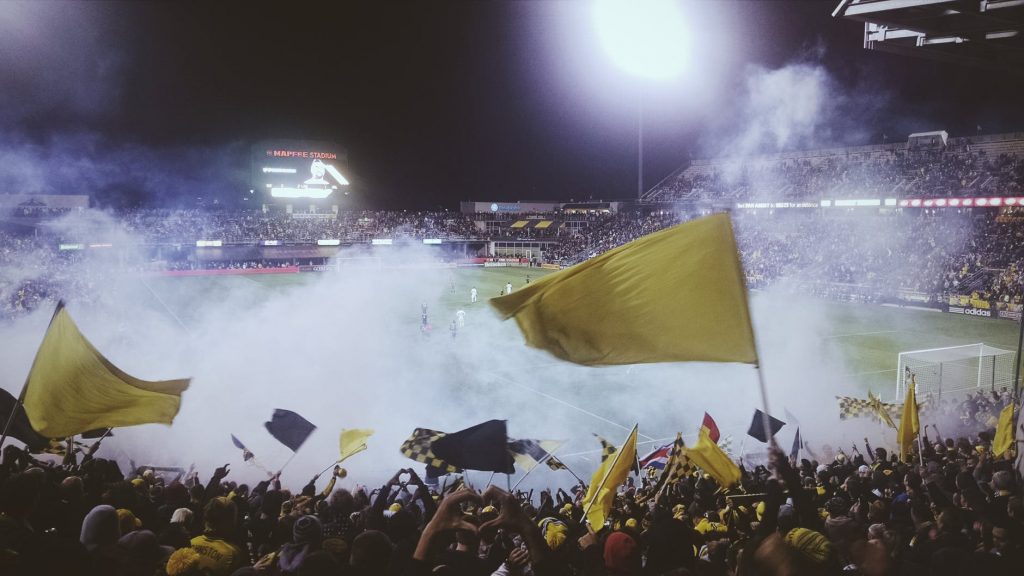The most common way of thinking a sports event is at a traditional venue. Recent trends, however, seem to suggest that more sports events are breaking the rule of the game and taking place on unconventional venues. The question is, why exactly would a sports management team want to host its stadium events, players and fans on the unusual ground? There are several reasons that seem to motivate this extraordinary trend. Three of these reasons seem to stand out.
-
There’s a thrill in thinking out of the ‘sports venues options box’
There’s security in doing things the usual way. In many sectors, however, audiences seem to demand inimitable experiences and the sports world is not being left behind. It means accepting the fact that holding an even on the same site can become boring and monotonous. You sit on the same benches, see the same scenery, use the same facilities and maybe see the same people. A change of setting comes with the excitement of a new experience of the old game.
-
The trend seems to be gaining popularity
Sports team management seems to be buying the new idea of hosting players and fans in unusual venues. The experiences are associated with high adrenaline among players and fans. The idea seems to be spreading fast as evidenced by the following examples.
- The November 2011 Carrier Classic between North Carolina Tar Heels and the Michigan State Spartans. The basketball game was described as jaw-dropping, not just for the adrenaline among the players, but also for the thrilling scenery of San Diego with the view of the ship on a Friday evening.
- The Qatar tennis season-opening game in January of 2011 between players Rafael Nadal and Roger Federer. The venue was extremely daring and kept everyone on their toes given that the court was set on the waters of Doha Bay, Qatar.
- In December of 2013, an underground Cricket game between Caldbek and Threlkeld teams was played on a 2000 ft pitch in Honister Slate Mine in England.
- The football game between Virginia Tech and Tennessee in September of 2016 at the National Association for Stock Car Auto Racing (NASCAR) Speedway in Bristol US.
-
Records are broken
When sports venues break conventions, the repeated outcome seems to be game tickets completely sold out and bigger profits for both the teams and the hosts. In the Virginia Tech and Tennessee 2016 football game, for example, the two teams were guaranteed $4 million and got an additional $300,000 because the seats completely sold out. The 156,990 spectators recorded the highest audience population in the history of American football.
Bottom line
Sports venue trends seem to be breaking the rule of the game by hosting players and fans on the unconventional venue. The success of such audacious choices seems to respond to the thrill of novelty that fans and interested parties are looking for. If you are a sports team manager and want to make history, why not think out of the box the next time you plan a match?
But for the proprietors of sport places, it’s very important to comprehend the concept of hospitality design to your institution. Contemporary entertainment and sports places and diversion precincts need a specialized, multifunctional design to cater to varied occasions, audiences and participants
The achievement of any contemporary leisure or sport place is complicated and involves maximizing website chances while enjoying the surrounding atmosphere.
Sensitive integration of landscape and buildings must set a clear sense of location and purpose to guarantee spectator pleasure, amenity and security.
Designing a sports arena is not a simple job. You need to produce a construction that may ease the flow of tens of thousands of individuals in a brief while, provide catering and shopping facilities and provide audiences with a wonderful view of the sport. Some architects do so with panache, designing stadiums which appear truly amazing, while also satisfying their functions as well as adding a couple more functions. The Marvel Stadium in Melbourne integrated conference room spaces for hire in addition to, well, the stadium.

Below is a listing of the very well-designed arena, completely embracing the unconventionality, in our view.
Football Stadium FC Bate Borisov
Layout: OFIS Arhitekti
Location: Borisov, Belarus
From a scene that resembles a bird’s nest into one with stains on, this really is actually the brand new arena for Belarusian soccer club FC BATE Borisov.
Produced by Slovenian company OFIS Arhitekti to fulfil UEFA needs, this 13,000-seater soccer stadium introduced in 2012, is soccer club BATE Borisov’s new residence. The structure is built in aluminium and mimics the building of living cells emphasized by spongy openings. A shimmering skin-like cloth covers the dome and leaves the building to appear as if it is living.
Soccer City Johannesburg
Layout: Populous
Location: Johannesburg, South Africa
This scene was built to host the 2010 FIFA World Cup, the first time that the event had happened in Africa.
The challenge for designer Populous was going to make a new state of the art arena that would work as a sign for contemporary African American civilization as well as crucially, fulfil FIFA’s specialized requirements. The layout needed to work around a present historic stadium, therefore the project known for the correct balance of rebuilding and renovation.
The facade consists of a specially designed irrigation program, developed as fibre-cement panels which can be generated with locally sourced material. This provides a distinctive African taste to the facade of this building. The bud is punctured by receptive panels which provide natural venting and, once the scene is lit up, mimic the starlit African skies.
Allianz Arena
Layout: Herzog & de Meuron
Location: Munich, Germany
Designed by Herzog & de Meuron – the artists of the Beijing National Stadium – the Allianz Arena is home to the world-famous German soccer club Bayern Munich, also its colour-changing facade has turned into something of a tourist attraction.
When designing the scene, the architects concentrated on three important topics, ‘the existence of the scene within an illuminated body which may change its physical appearance and is located in an open landscape, the procession-like coming of lovers within a landscaped area and the crater-like inside of the scene itself.’
Both the shell and also the branches of the arena are designed around to execute these 3 important concerns. The interior design style followed suit; the most important staircase along the exterior of the casing follow the line of greatest slope, underscoring that the procession-like approach of traffic to the arena.
These topics lend the job its own distinguishing personality, though other places and rooms, like the VIP Lounges, Lobbies, Catering Zones, etc., are indistinguishable from those of different stadiums and therefore are subject to the modifications necessarily introduced with their own customers.



